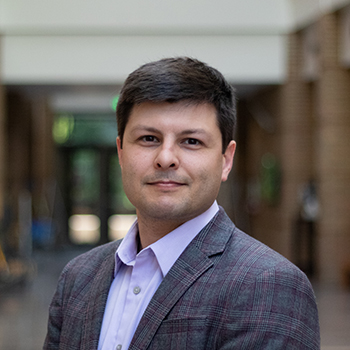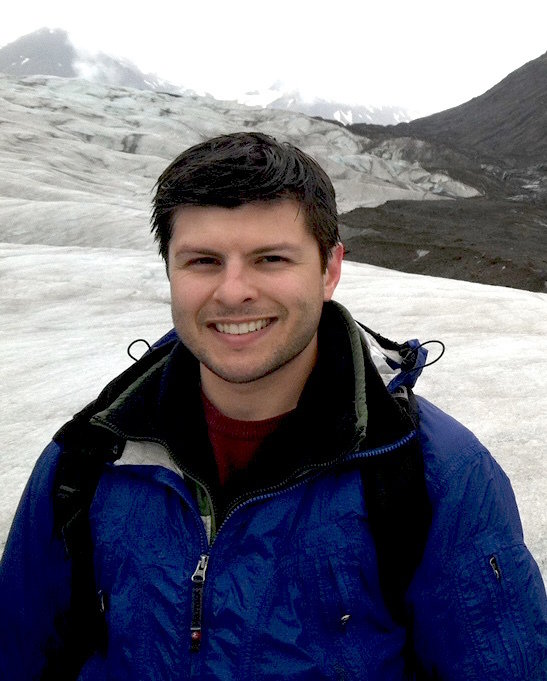
Welcome Chris Limbach to Michigan Aerospace Faculty
Limbach explains his research, lasers, and what he’s excited to work on at U-M

Limbach explains his research, lasers, and what he’s excited to work on at U-M

We’re thrilled to welcome Chris Limbach to the faculty at Michigan Aerospace. Limbach returns to the Midwest (he grew up in the Milwaukee area) after his education and teaching experience across the country from Tucson, AZ to Princeton, NJ and Fort Collins, CO. Most recently he served as Assistant Professor at Texas A&M University in College Station, TX. We sat down with Limbach to learn more about his research and goals as he gets settled.
What drew you to U-M Aerospace and how do you hope to help make it even better?
U-M is world-renowned for research excellence and leadership in building the future. What drew me to U-M Aerospace was the combination of new opportunities in specific areas – such as hypersonics, propulsion and space – but also “big picture” and forward-looking thinking. I’m excited to work with so many talented colleagues to create an exciting future, bringing to bear my own experiences and expertise. For my part, I hope to bring a new perspective as someone with training in laser science, optics, and atomic physics. So many aerospace technologies (for example, fiber optic gyroscopes, remote sensing LIDAR and optical communications) touch on societal challenges such as connecting the world, understanding the earth’s climate, and enabling the human exploration of space. I am thrilled to discuss how these technologies can play a positive role in shaping the future aerospace systems.
What do you research and why?
One of the reasons I was drawn to Aerospace Engineering was the wide range of subdisciplines that interact and come together. As a student, and still today, I am amazed and excited by the opportunities to apply my background in physics and optics to the discovery of new solutions and ideas for aerospace systems. My research interests divide into two main areas: optical and laser-based diagnostics, and applications of photonics to flow control and propulsion. Laser diagnostics refers to new ways of measuring processes happening on ultra-fast timescales such as hypersonic boundary layers and pulsed plasmas. The ability to observe, understand and model these physical systems are critical to the design and development of more robust, capable and sustainable flight platforms. On the application side, my research explores new concepts for laser-enabled flow control such as using laser-triggered discharges as actuators. Compared with physical control surfaces, optical and plasma-based systems can achieve the bandwidth needed in high-speed flight.
Why did you become a researcher/faculty member?
At some point in our academic lives, I hope we all recognize and embrace the unique perspective and creativity each of us brings to new problems and opportunities. In my graduate work, I was fortunate to recognize and embrace the different ways my combination of physics and fluid mechanics background influenced how I formulated and thought about problems. In many ways, I became a researcher because of my profound enjoyment in exploring those new ideas and solving challenging problems. As a faculty member, I also have the honor of sharing and refining my own understanding of science and engineering through interactions with students.

What are you most proud of in your work?
In 2018 and 2019 I received two grants from the innovative advanced concepts program at NASA to explore a new physical mechanism to enable beam propulsion. The entire premise of beam propulsion is frankly unconventional: to dispense with reaction mass entirely! Instead, imagine a large, primary spacecraft sending out a directed beam of rarefied gas or laser light which is intercepted by a second spacecraft. The momentum transfer during that interaction then propels the second spacecraft to high velocity, as it carries neither propellant nor a propulsion power source.
I am very proud of the work my group has done – and continues to pursue – aiming to explore and understand a new concept for beam propulsion. The idea we investigated deals with the essence of how light and matter exchange energy and momentum. We specifically showed that self-guiding of combined laser and matter beams is possible using a combination of light refraction (e.g. the mirage effect) and optical forces on atoms (e.g. optical tweezers). This has been very exciting research and a risky ‘out there’ idea and I am thankful that NASA saw the value in funding this exciting new concept.
What do you want aerospace students to know about you?

That I am hiring! I have a strong track-record of involving undergraduate and graduate students from many backgrounds and experience in research. There is a standing invitation for every student to stop by my office (but not all at once!) to discuss optics, photonics, lasers, aerospace news, whatever. Optics and lasers are becoming increasingly relevant to the future of Aerospace Engineering. From fiber gyroscopes for spacecraft control, to ultrafast diagnostics for ground testing, to optical communications for deep space, optical technologies will continue to enable flight further and faster than ever before. I’m very excited to engage students in learning about these technologies and how they can shape the future of the profession.
What do you do for fun?Well I love to run, road bike and swim when possible. Back in college I raced triathlons and long-distance relays but there is less time now. Notably, I biked across the country (Norfolk, VA to San Francisco, CA) in summer 2009 before starting graduate school, which was a fantastic experience that I highly recommend. Now I try to get in a 3-4 mile run twice a week. I also frequently enjoy camping and playing with my three kids.